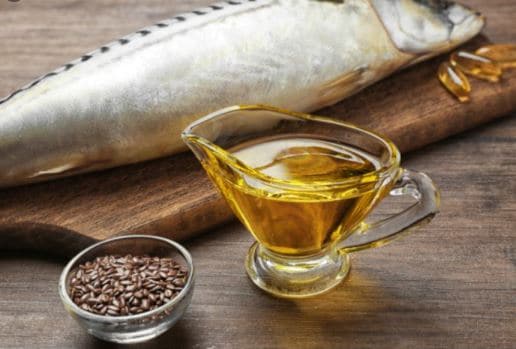A proper and nutritious diet is what it takes to keep your dog healthy and fine. By eating some fresh and nutritious food in their diet, your dog can live a happier and longer life. Whether raw or lightly cooked, a mostly fresh food diet yields outstanding results, with clear eyes, beautiful coats, great teeth, sweet breath, calm dispositions, and dogs who are rarely sick.
Dry food or kibble is easy and convenient to use, and you can boost its nutritional value by adding several fresh foods. It’s not compulsory to switch to a 100% raw diet, but you can replace even 50% of your dog’s kibble with fresh food.
In this guide, you’ll learn how to enhance your dog’s kibble and supplement your kibble with fresh food.
How to enhance your dog’s kibble – Supplementing kibble with fresh food
Eggs

Eggs are not only widely available; they are one of the most nutritious items you can add to your dog’s food. Not only nutritious and dense, but eggs are also super easy to digest. The fatty acids in eggs are very beneficial for your dog’s skin and coat health.
Eggs are again very beneficial as they are high on the amino acid profile, which is essential for your dog as some of the amino acids in kibble get denatured when cooked and processed.
If you’re going to feed eggs to your dog, make sure you give it the whole egg, i.e., both white and yolk, and in moderation. It’s because they are rich, and if your dog isn’t habitual to having new things in the diet, excessive eggs can cause problems like gas and diarrhea.
Meat

You can add raw or lightly cooked meat to your dog’s kibble. This comes with many benefits as your dog gets an adequate amount of protein which otherwise can’t be fulfilled by kibble.
However, there are some myths regarding whether you should feed your dog with kibble and raw meat together in the same meal. Some people say that both of these things can’t be fed together as they have different digestive rates, and the meat can increase the chances of bacterial overgrowth in your dog. Another claim was that both meat and kibble need different stomach pH to digest. That’s why they can’t be fed together.
There’s absolutely no truth in such myths as a dog’s digestive system is capable of handling different food items that require different pH levels to digest. Also, some dog food companies offer kibble and dried raw meat together in the same meal. That’s why there is no harm in adding some raw meat to your dog’s food.
Veggies and Fruits

Though kibble has plant matter included, and it would be best if you focus on meat, adding some fresh fruits and veggies is always a great idea.
Fruits and veggies act as a great source of antioxidants, phytonutrients, and fiber for your dog. Phytonutrients are great for your dog as they are anti-aging, anti-fungal, anti-inflammatory, anti-bacterial, and anti-worms. What else could be more beneficial, right?
However, while feeding your dogs with fruits and veggies, make sure you don’t give them raw chunks of them as dogs can’t break down the cellulose inside the veggies, which means they won’t make the most out of the nutrients. The best way to give veggies to your dogs is to give them in a pureed form.
You can make your own fruit and veggie mix for your dog in the food processor, then freeze it in a mini muffin tin or ice cube molds for easy feeding.
Goat Milk

Goat’s milk is the most digestible milk available due to its smaller molecules. If your dog has issues with bovine dairy, you can give it goat milk instead of cow milk.
Raw Goat milk has natural probiotics, which are very easy to absorb and benefits the digestive system of your dog. Also, Goat milk has a good calcium-phosphorus ratio. It is an excellent source of fatty acids, vitamins, antioxidants, enzymes, protein, and electrolytes. Let’s compare goat milk to cow milk. It has 25% more vitamin B6, 13% more calcium, 134% more potassium, 3 times more niacin, 47% more vitamin A, and 27% more of the antioxidant selenium. What else could be better, right?
Fish Oil

This is probably the best thing you can add to your dog’s diet, and it’s pretty easy to do so. Fish oil has omega 3 fatty acids that are very beneficial for the joints, coat, and skin, and most importantly, the heart. However, while choosing a fish oil, it’s best to choose something high in Omega 3 fatty acids and low in mercury. You can take salmon, sardine, or herring oil.
Noteworthy Point – DO not add cod liver oil to the kibble as it has extra vitamins, including fat-soluble Vitamins A, that may cause health issues if given more than needed. Also, it’s best to keep fish oils in the refrigerator as they are at risk of getting spoiled quickly. If you’re using whole fish, keep it in the deep freezer.
Bone Broth

Many owners swear by bone broth because it adds the required hydration to your dog’s diet. This is beneficial for dogs who eat dried or frozen diets. Water is very essential for everyone, from humans to dog, and if your lovable pooch isn’t drinking enough, you should add bone broth to its diet.
Bone broth is also responsible for promoting healthy digestion, repairs leaky gut, and also helps to detox the liver. Apart from this, bone broth is also very palatable which means if your dog is being picky or sick, it will encourage them to eat their whole diet.
Fermented Vegetables

When we ferment something, the microorganisms break down the food and pre-digests it. That makes fermented food very easy to absorb by the body. Fermented vegetables are also loaded with essential bacteria that support a healthy gut. And it’s well-known that a healthy gut is very essential to boost the immune system.
If your dog has Irritable Bowel syndrome or IBD, fermented foods are especially beneficial for them. Make sure you slowly add the fermented food so it doesn’t upset your dog’s stomach.
Another noteworthy point is that do not feed your dog with any fermented food that has onion in it and if you’re buying sauerkraut from the market, make sure you buy an organic one and not the one that has alcohol added.
The Bottom Line
Raw vegetables and meat are very beneficial for your lovely pet. But please remember, if you’re adding these extras to their bowl, keep an eye on their weight as these will add a few extra calories as well. The best practice is to balance the portion you’re feeding your dog. For instance, if you’re adding a boiled egg to the diet, remove an egg-sized portion from the kibble to balance the whole thing. Also, start with adding a very small quantity and see if your dog is coping well with it.


